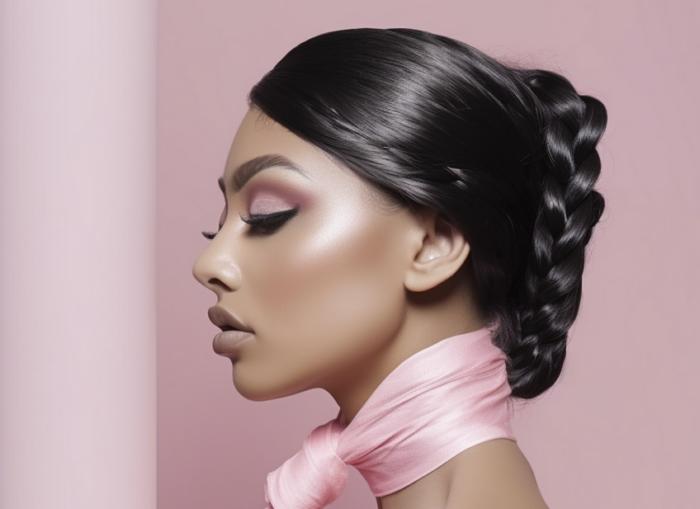Fashion and Feminism: An Uneasy Relationship

Introduction: A Match Made in a Discount Clothing Store
Fashion and feminism: two words that, when brought together, create an interesting concoction, not unlike mixing whiskey with orange juice (not recommended, by the way). Yet, in the history of women's rights and self-expression, these two seemingly contradictory concepts have been bound together like a pair of ill-matched socks.On one hand, we have fashion: the ever-changing, often superficial and commercial industry that thrives on impossible beauty standards and the promotion of consumerism. On the other hand, we have feminism: the political movement advocating for the social, political, and economic equality of the sexes. It's like trying to mix oil and water, or a heavy metal band and a classical orchestra. But, like any awkward relationship, there are moments of understanding, love, and the occasional screaming match.
Fashion as a Feminist Weapon: The Breeches of Justice
Throughout history, women have used fashion as a means to navigate societal expectations and express themselves as they saw fit. Take, for instance, the 18th-century French "sans-culottes" movement. In a time when women were expected to don floor-length skirts and corsets, these radical women said, "To hell with that!" and wore trousers instead. It was not just a fashion statement but a political one too. Wearing pants was a way for women to challenge the norm and assert their right to equality.Fast-forward to the 20th century, and we can see examples of fashion being used as a feminist weapon again. The flappers of the 1920s, with their short hair, shorter skirts, and penchant for smoking and dancing, were the embodiment of a new, liberated woman. And who can forget the infamous "bra-burning" protests of the 1960s, when women quite literally set fire to the symbols of their oppression (though, contrary to popular belief, no bras were actually burned).
The Dark Side of Fashion: When Feminism Gets Lost in Translation
However, for every empowering fashion statement, there's an equally disheartening one. The fashion industry has been notorious for promoting unrealistic beauty standards that can be detrimental to women's self-esteem and mental health. Models with unattainable body types grace magazine covers and runways, while retouched advertisements create impossible expectations.Then there's the issue of sexual objectification. The fashion industry has often been accused of reducing women to mere objects, to be gazed upon and consumed like a piece of clothing or a fashion accessory. This objectification can be seen in the prevalence of overly sexualized advertisements, where women are often scantily clad or in suggestive poses.
Moreover, let's not forget the labor rights issues that plague the fashion industry. Many fast fashion brands have been exposed for exploiting female workers in factories abroad, paying them meager wages and subjecting them to dangerous working conditions. So much for sisterhood, right?
Finding Common Ground: Can Fashion and Feminism Coexist?
Despite the tensions and contradictions between fashion and feminism, there are ways in which the two can coexist and even complement each other. For example, there has been a surge of feminist fashion brands in recent years, with companies incorporating feminist messages into their designs or using sustainable and ethical practices.Moreover, the fashion industry has started to (slowly) embrace body positivity and inclusivity, with designers showcasing a more diverse range of models on their runways and in their advertisements. Plus-size models, transgender models, and models of color are finally getting the representation they deserve, helping to challenge and redefine beauty standards.
And let's not forget the power of individual choice. Women can use fashion as a form of self-expression and empowerment, choosing to wear what makes them feel strong and confident. Whether it's a power suit, a graphic tee with a feminist slogan, or a pair of comfortable sneakers, fashion can be a tool for women to assert their autonomy and defy societal norms.
Conclusion: The Future of Fashion and Feminism
So, can fashion and feminism ever truly get along? It's a question as old as time (or at least, as old as the first pair of high heels). While it's unlikely that the fashion industry will ever be completely free of its problematic aspects, there is potential for positive change. By embracing ethical and sustainable practices, championing diversity and inclusivity, and empowering women to express themselves through their clothing choices, fashion can become a force for good — and maybe, just maybe, fashion and feminism can finally learn to play nice together.But until then, I'll be over here wearing my "Feminist AF" t-shirt, sipping whiskey (hold the orange juice), and pondering the complexities of this uneasy relationship.
Article kindly provided by foreverinfashion.org
Latest Articles
- The Psychology of Tattoo Aesthetics: Why Certain Imagery Resonates
- Style That Works With Your Body, Not Against It
- Fashion Tourism on Wheels: Curated Shopping Routes Led by Chauffeur Guides
- The Charm of Certainty in a World of Indecision
- Can an Everyday T-Shirt Be Turned into a Modern Heirloom?
- Color, Ceremony, and the Psychology of Celebration
- Styling Graphic T-Shirts for Different Body Types
- Getting Kids to Wear Their Hats Without a Bribe or a Meltdown
- Mastering the Art of Being the Unnoticed Photographer
- Quiet Sportswear Moves Loudly
- Fashion's Most Misunderstood Color Is Brown
- Weight Matters When Cotton Gets Real
- SKU's Out for Summer: Why Your Warehouse Is Melting Down
- Ink as Accessory - How Tattoos Are Replacing Jewelry in Modern Style
- Accessories
- Jewellery
- Footwear
- Skirts and Dresses
- Shirts and Blouses
- Beauty and Makeup
- Fashion Photography
- Sustainable Fashion
- Street Style
- Fashion History
- Fashion Business
- Fashion Styling
- Fashion Events
- Plus-Size Fashion
- Men's Fashion
- Women's Fashion
- Fashion Blogging
- Fashion Trends
- Fashion Retailers
- Fashion Tips and Advice
- Fashion Business Startups
- Fashion Around the World
- Lingerie
- Sportswear
- Weddings

